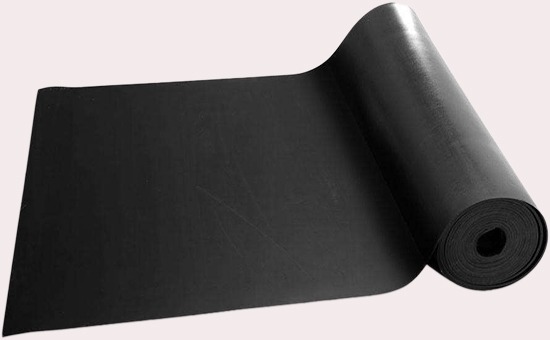
The so-called calendering process is the process of using the interaction between two rollers to roll the rubber into a film with a certain thickness. This process requires high rubber and equipment technology. The molecular structure of butyl rubber determines its poor rolling performance. It cannot be rolled without any filler. Therefore, improving the rolling performance of butyl rubber has the significance of improving the quality of butyl rubber products and improving production efficiency. Significant, so what methods can improve the calenderability of butyl rubber?
1.The Mooney viscosity of the rubber is controlled below 60
The lower Mooney viscosity is the basis to ensure the smooth rolling process of butyl rubber. When the butyl rubber is rolled, the rubber with a Mooney viscosity lower than 60 has better fluidity and better rolling efficiency and effect. Therefore, the Mooney viscosity of the butyl rubber that needs to be calendered is preferably controlled below 60, which should be paid attention to when selecting materials.
2. Choose the right rubber filler to control the amount of filler
Butyl rubber itself has low mechanical strength. After adding a reinforcing filler, the rubber strength can be improved, and good roll wrapping performance can be obtained. Adding a suitable amount of rubber filler with a high degree of structure and a small particle size to the butyl calendering compound reduces the rubber content of the compound, reduces the elastic deformation, and reduces the rolling shrinkage rate. In actual production, different types of rubber fillers have different effects on the calendering properties of butyl rubber.
Take butyl rubber as an example: when butyl rubber is used in the preparation of rubber, a large amount of rubber filler is required. Among them, thick carbon rubber, soft carbon black, soft clay 2LLYY0326 and other rubber fillers are more favorable for butyl rubber calendering; the use of butyl rubber to produce thin erase rubber uses hard carbon black, hard clay, calcium carbonate. Reasonably control the amount of various rubber fillers in the butyl rubber to avoid excessive roll fillers causing roll off.
It should be noted that the improper use of rubber fillers will have a rolling effect, and the use of anisotropic fillers such as magnesium carbonate and talc should be avoided as much as possible.
Calendering has strict requirements on various indicators of butyl rubber. Suitable roll wrapping, good flowability, low shrinkage, and scorch safety are the basis for ensuring the normal extrusion of rubber. Therefore, rubber products Manufacturers not only need to choose rubber raw materials and compounding agents reasonably, but also need to further improve the fluidity and roll coverage of butyl rubber through adjustment of formula and process. Later Xiaobian will continue to share with you the improvement of butyl rubber calendering Other methods.
Exclusive original article [commercial authorization] reprint, excerpt and excerpt in any form are prohibited without written authorization. Focus on Hongyun rubber: learn the process formula and raw material technology of producing rubber products from recycled rubber to help you reduce costs and increase profits